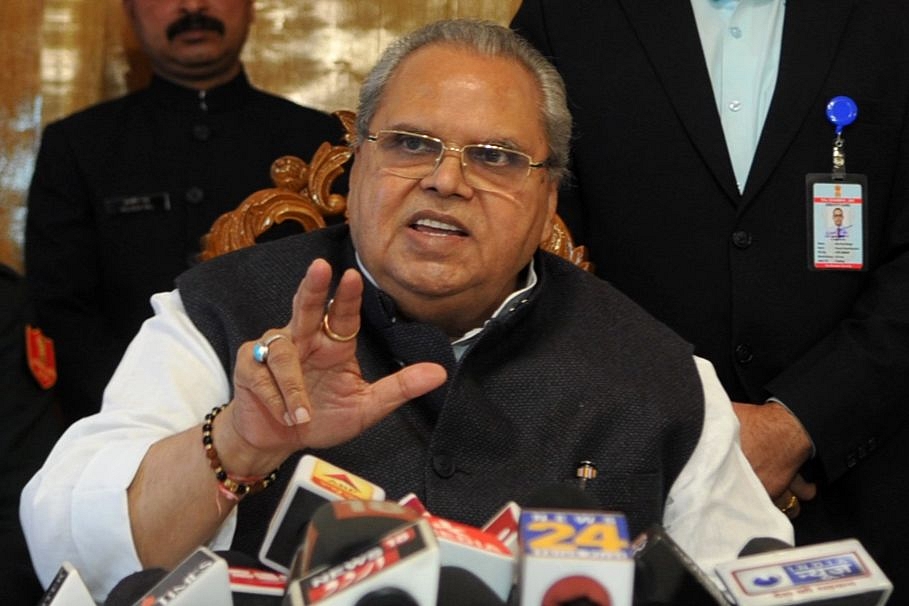News Brief
CBI Raids Premises Of Former J&K Governor Satya Pal Malik In Kiru Hydropower Corruption Probe: Here's All You Need To Know

J&K Governor Satya Pal Malik (Photo by Nitin Kanotra/Hindustan Times)
The Central Bureau of Investigation (CBI) has launched raids at 30 locations across eight states and union territories, including three premises belonging to former Jammu and Kashmir Governor Satya Pal Malik in Delhi, Gurugram, and Uttar Pradesh's Baghpat.
The raids are part of an investigation into the alleged corruption case related to the awarding of a contract for a hydel project in the Union Territory.
As reported by Indian Express, besides Malik's properties, locations linked to his associates, including IAS officer Naveen Choudhary, former chairman of CVPPPL ( Chenab Valley Power Projects) MD MS Babu, and directors M K Mittal and Arun Mishra, were also searched.
The probe stems from alleged irregularities in the projects of Jammu and Kashmir during Malik's tenure as Governor.
Last year, the CBI had registered cases based on allegations of malpractices in awarding contracts for the J&K Employees Health Care Insurance Scheme and the Kiru Hydro Electric Power Project, reported TOI.
However, Satya Pal Malik, who was the governor of Jammu and Kashmir between 23 August, 2018, and 30 October, 2019, had claimed that he was offered a Rs 300-crore bribe for clearing two files, including the one pertaining to the project.
“The case was registered on allegations of malpractices in award of a contract worth approximately Rs 2,200 crore of civil works of Kiru Hydro Electric Power Project (HEP) to a private company in the year 2019,” the Central Bureau of Investigation (CBI) had earlier said.
Subsequently, the agency has booked former chairman, Chenab Valley Power Projects (P) Ltd, and other former officials in the case.
Support Swarajya's 50 Ground Reports Project & Sponsor A Story
Every general election Swarajya does a 50 ground reports project.
Aimed only at serious readers and those who appreciate the nuances of political undercurrents, the project provides a sense of India's electoral landscape. As you know, these reports are produced after considerable investment of travel, time and effort on the ground.
This time too we've kicked off the project in style and have covered over 30 constituencies already. If you're someone who appreciates such work and have enjoyed our coverage please consider sponsoring a ground report for just Rs 2999 to Rs 19,999 - it goes a long way in helping us produce more quality reportage.
You can also back this project by becoming a subscriber for as little as Rs 999 - so do click on this links and choose a plan that suits you and back us.
Click below to contribute.
Latest